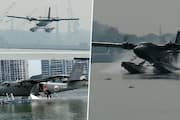9 fascinating facts of Mohenjo Daro

Ashutosh Gowariker's Hrithik Roshan-starrer Mohenjo Daro has receivied a lot of criticism after the release of its trailer. Most of them point out that the film has wrongly portrayed the era of the famous Indus Valley civilisation. Criticisms range from the complexion of characters to their outfits. Here are few interesting facts about the city that you may not have known off, and surprisngly includes unicorns and chickens.
1. Only 100-years-old!
Though Mohanjo Daro was built as early as 26th century BC, it was discovered only in 1921. The excavation works continued for four decades, and it was finally completed in 1964. It is regarded as one of the earliest modern city's in the world.
2. Mohenjo Daro and Chickens
Though no one knows the actual name of this ancient city, it is believed that it was earlier known as "Kukkutarma" - the Dravidian name meaning "the city of cockerels". According to archaeologists, it might have been the first civilization to domesticate chicken for the religious purpose like sacrificing. However, Mohenjo Daro means "the mound of the dead" in Sindhi.
3. First planned city
In today's modern world, we still face issues regarding the lack of basic planning and infrastructre, and it is amazing to see that Mohenjo Daro was a well-planned city. The city had two parts - a higher mound that had the acropolis, while the lower mound was a residential area. The roads were broad while the streets were laid in a perfect pattern with a remarkably designed buildings. Rectilinear houses had individual bathrooms, inner courtyards and covered drains, which were channeled to an underground sewer system. The city also had a marketplace, underground furnace, defence fortifications, towers, etc. However, there is no trace of temples, tombs, palaces, government, kings or queens.
4. Modern ornaments
Can you believe that we are still following Mohenjo Daro style of ornaments? We love beaded jewellery, and the type of ornaments range from small nose pins to large necklaces along with other body decorations, and they too used similar jewellery. Historians have excavated beautiful silver ornaments adorned with colourful stones like red carnelian, agate and emerald among others. They used to wear necklaces, earrings, bracelets, finger rings and other body ornaments similar to ours.
5. The great bath -the father of bath houses
The great bath is a bathing pool made of bricks polished with natural tar to make it waterproof. The 8-feet deep, 23-feet wide, 39-feet long bathing pool had changing rooms and bathrooms around it, and is believed to have been used for religious purification purposes.
6. City of Wells
Archaeologist Michael Jansen believes that the city was home to 700 or more wells, and there was at least one well for three houses. Each well was maintained for hundreds of years and was dug throughout the city with lots of planning. Excavator Ernest Mackay believes that some of these wells were later abandoned as someone jumped into them.
7. Arts and crafts
People of Mohenjo Daro were experts at ivory and shell carving as well as making stuff out of metals like bronze and copper. The 10.8-cm long bronze statuette of a dancing girl clearly depicts their skill. They were also experts in the production of lapidary and stone tools, glazed ornaments and stoneware bangles. Historians also excavated remnants of a seal manufacturing workshop.
8. Unicorns at Mohenjo Daro!
Bengali filmmaker Satyajit Ray has stated that the creature of fantasy mentioned by the archaeologists is, in fact, a bull-like creature with a single curved horn on its forehead. In his short story: The Unicorn Expedition. He stated that these creatures were unicorns, and not any fantasy creature as suggested by archaeologists.
9. City is approaching its death
The 5000-year-old ruins of a once a hustling and bustling city are fast crumbling, and expert archaeologists state that it will survive only for another 20 years. Like Saraswathy and Indus, which gave rise to the civilization, this major urban centre of Indus Valley Civilisation , too, is on its way to being wiped off the face of the earth.

 subscribe to Asianet Newsable WhatsApp channel by clicking here.
subscribe to Asianet Newsable WhatsApp channel by clicking here.














